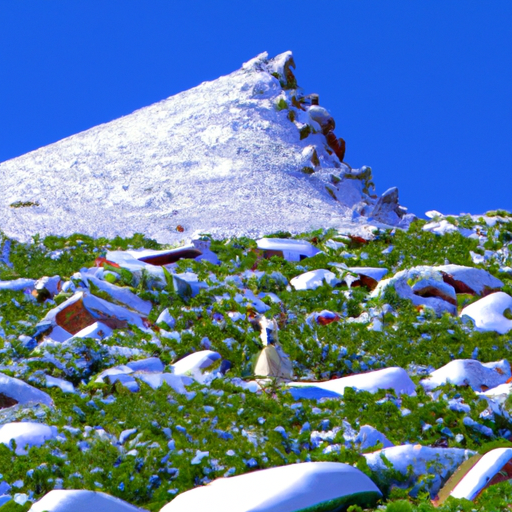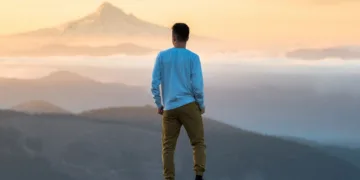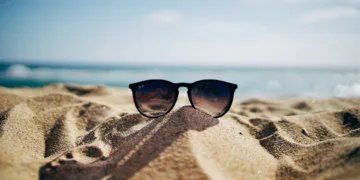Table of Contents
- Introduction
- What Gear Do You Need to Become a Professional Wildlife Photographer?
- How to Find the Best Locations for Wildlife Photography
- Tips for Capturing the Perfect Wildlife Shot
- How to Use Natural Light to Enhance Your Wildlife Photography
- How to Develop Your Own Unique Style of Wildlife Photography
- Conclusion
«Capture the Wild: Unlock Your Professional Potential as a Wildlife Photographer!»
Introduction
If you have a passion for wildlife and a desire to capture its beauty through photography, then becoming a professional wildlife photographer may be the perfect career for you. Wildlife photography is a challenging and rewarding profession that requires a combination of technical skill, creativity, and patience. To become a professional wildlife photographer, you will need to develop your skills in photography, learn about the animals you are photographing, and understand the business side of the profession. With dedication and hard work, you can turn your passion for wildlife into a successful career.
What Gear Do You Need to Become a Professional Wildlife Photographer?
Becoming a professional wildlife photographer requires a great deal of dedication and the right equipment. To ensure you are able to capture the best images possible, you will need the following gear:
1. Camera: A professional-grade digital camera is essential for capturing high-quality images. Look for a camera with a high megapixel count, a fast autofocus system, and a wide range of ISO settings.
2. Lenses: A variety of lenses are necessary for capturing different types of wildlife. Look for lenses with a wide range of focal lengths, from wide-angle to telephoto.
3. Tripod: A sturdy tripod is essential for keeping your camera steady and reducing camera shake. Look for a tripod with adjustable legs and a ball head for easy maneuverability.
4. Flash: A flash is necessary for capturing images in low-light conditions. Look for a flash with a high guide number and a wide range of power settings.
5. Filters: Filters are essential for controlling the amount of light entering the lens. Look for a variety of filters, including neutral density, polarizing, and graduated filters.
6. Memory Cards: Memory cards are necessary for storing your images. Look for high-capacity cards with fast read/write speeds.
7. Batteries: Batteries are essential for powering your camera and flash. Look for rechargeable batteries with a high capacity and long life.
By investing in the right gear, you can ensure you are able to capture the best images possible and become a successful professional wildlife photographer.
How to Find the Best Locations for Wildlife Photography
Wildlife photography is a rewarding and exciting hobby that can take you to some of the most beautiful and remote places on earth. To get the best shots, it is important to find the right locations. Here are some tips for finding the best locations for wildlife photography.
First, research the area you plan to visit. Look for information about the local wildlife, the terrain, and the climate. Knowing what species of animals are in the area and what type of habitat they prefer will help you plan your trip.
Second, consider the time of year. Different species of animals migrate at different times of the year, so it is important to plan your trip accordingly. For example, if you are looking to photograph birds, you may want to visit during the spring or fall migration.
Third, look for areas with plenty of natural cover. Animals are more likely to be active in areas with plenty of vegetation, so look for areas with dense vegetation or trees. This will provide the animals with a sense of security and make them more likely to come out into the open.
Fourth, look for areas with plenty of water. Animals need water to survive, so look for areas with rivers, lakes, or ponds. This will attract a variety of wildlife and give you plenty of opportunities for great shots.
Finally, look for areas with plenty of light. Wildlife photography often requires long exposures, so look for areas with plenty of natural light. This will help you capture the best shots.
By following these tips, you can find the best locations for wildlife photography. With a little research and planning, you can find the perfect spot for capturing stunning images of wildlife in their natural habitat.
Tips for Capturing the Perfect Wildlife Shot

1. Be Patient: Wildlife photography requires a great deal of patience. Animals are unpredictable and can take a while to appear. Be prepared to wait for the perfect shot.
2. Use the Right Equipment: Invest in quality equipment that will help you capture the best possible images. A good camera, lenses, and tripod are essential for wildlife photography.
3. Get Close: Try to get as close as possible to the animal you are photographing. This will help you capture more detail and create a more interesting image.
4. Use Natural Light: Natural light is the best light for wildlife photography. Try to take your photos during the golden hours of the day, when the light is soft and warm.
5. Be Stealthy: Animals can be easily scared away by loud noises or sudden movements. Move slowly and quietly to avoid startling them.
6. Use a Telephoto Lens: A telephoto lens will allow you to capture close-up shots of animals from a distance. This is especially useful for photographing animals that are shy or dangerous.
7. Use a Fast Shutter Speed: A fast shutter speed will help you freeze the action and capture sharp images.
8. Be Prepared: Make sure you have all the necessary equipment and supplies before you head out for a wildlife photography session. This will help you be prepared for any situation.
9. Be Respectful: Always respect the wildlife you are photographing. Never disturb or harass animals in order to get a better shot.
10. Have Fun: Above all, have fun! Wildlife photography can be a rewarding and enjoyable experience. Enjoy the process and don’t be too hard on yourself if you don’t get the perfect shot every time.
How to Use Natural Light to Enhance Your Wildlife Photography
Wildlife photography is a popular and rewarding hobby, but it can be difficult to capture the perfect shot. Natural light is one of the most important elements of successful wildlife photography, and understanding how to use it can help you take stunning photos.
When shooting outdoors, the best time of day to take advantage of natural light is during the golden hour. This is the hour before sunset and the hour after sunrise, when the sun is low in the sky and the light is soft and warm. During this time, the light is less harsh and creates a beautiful, golden glow that can make your photos look stunning.
When shooting during the golden hour, try to position your subject so that the light is coming from behind them. This will create a backlit effect that will make your subject stand out from the background. You can also use the light to create interesting shadows and silhouettes.
If you’re shooting during the middle of the day, you can still use natural light to your advantage. Look for areas of shade, such as trees or buildings, that will provide a softer light. This will help reduce harsh shadows and create a more even light.
When shooting indoors, you can use natural light to create interesting effects. Position your subject near a window and use the light to create a rim light effect. This will create a halo of light around your subject and make them stand out from the background.
Finally, don’t forget to experiment with different angles and positions. Moving around and trying different perspectives can help you capture unique and interesting shots.
By understanding how to use natural light, you can take your wildlife photography to the next level. With a little practice and experimentation, you’ll be able to capture stunning photos that you’ll be proud to share.
How to Develop Your Own Unique Style of Wildlife Photography
Wildlife photography is a unique and rewarding form of photography that can be both challenging and rewarding. Developing your own unique style of wildlife photography requires a combination of technical skill, creativity, and patience. Here are some tips to help you develop your own unique style of wildlife photography.
1. Learn the Basics: Before you can develop your own unique style of wildlife photography, it is important to learn the basics of photography. This includes understanding the fundamentals of exposure, composition, and lighting. Take the time to learn the basics of photography and practice them regularly.
2. Research Wildlife Photography: Researching wildlife photography can help you understand the different techniques and styles used by other photographers. Look at the work of other wildlife photographers and take note of the techniques they use. This will help you develop your own unique style.
3. Experiment: Experimentation is key to developing your own unique style of wildlife photography. Try different techniques and angles to see what works best for you. Don’t be afraid to try something new and take risks.
4. Practice: Practice makes perfect. The more you practice, the better you will become. Take the time to practice your skills and techniques regularly.
5. Be Patient: Wildlife photography can be a challenging and time-consuming endeavor. It is important to be patient and take your time when photographing wildlife. Don’t be discouraged if you don’t get the perfect shot right away.
By following these tips, you can develop your own unique style of wildlife photography. With practice and patience, you can create stunning images that capture the beauty of nature.
Conclusion
Becoming a professional wildlife photographer requires dedication, hard work, and a passion for the craft. It is important to have a good understanding of the technical aspects of photography, such as composition, lighting, and camera settings. Additionally, it is important to have a good knowledge of the wildlife you are photographing, as well as the environment in which they live. Finally, it is important to have a good network of contacts and resources to help you find the best opportunities for photographing wildlife. With the right combination of knowledge, skill, and dedication, anyone can become a professional wildlife photographer.

































